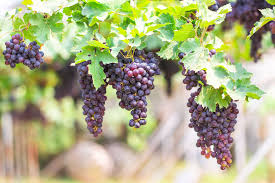Whether you are cultivating honeysuckle, clematis, or grapes, regular pruning is essential for the health and growth of your vines. Pruning ensures that air and sunlight reach the inner parts of the vines, providing them with the necessary sunlight, airflow, and nutrition to thrive. Proper trimming also reduces the vine’s mass and weight, preventing damage to the supporting structure. Since pruning encourages new growth, finding the right balance between promoting growth and maintaining the vine’s size and shape is crucial.
Method 1: Maintaining Climbing Plants
Step 1: Prune Late-Blooming Vines in Winter or Early Spring
Late-blooming vines, such as honeysuckle and trumpet flowers, should be pruned during the late winter or early spring. This timing allows the vines to produce new shoots and flowers for the next growing season.
Step 2: Prune Early-Blooming Vines After Flowering
Vines that bloom in the spring and early summer, like jasmine and wisteria, should be pruned at the end of the growing season. For vines that bloom early but produce fruit, such as kiwi and passionfruit, prune in the early spring before flowering to avoid losing your fruit crop.
Step 3: Make Clean Cuts
Use garden shears to make clean cuts, avoiding twisting or tearing the shoots, which can damage the vine and make it more susceptible to infection and disease. Cut shoots flush with the main stem and about 1 inch (2.5 cm) above a bud pointing in the desired growth direction. Avoid creating inward or crossing buds to ensure adequate sunlight and airflow.
Step 4: Remove Dead, Diseased, and Damaged Growth
Promptly remove all dead, diseased, and damaged parts using garden shears, cutting them back to healthy wood. Leaving these parts on the vine can lead to insect infestations, spread disease, and limit growth.
Step 5: Shape Your Vine by Removing Errant Stems
Snip stems growing in undesired directions, especially those growing away from the support structure.
Step 6: Remove Tangled Stems
Tangled stems restrict light and airflow, inhibiting growth. If it’s hard to determine where to cut, make random snips and remove the stems once they die.
Step 7: Trim Unruly Vines to the Ground
For extremely unruly vines, trim them down to ground level in the late winter or early spring to encourage healthy, manageable regrowth the following year.
Method 2: Training and Pruning Grapevines
Step 1: Prune Grapevines During Winter
Pruning grapevines during winter reduces the risk of infection, as the vine is dormant and has more time to recover before the next growing season. Sterilize pruning shears after working on each vine by dipping them in isopropyl alcohol to further reduce infection risk.
Step 2: Select One Shoot During the First Year
During the first year, remove all but the most vigorous shoot from the main trunk, cutting it down to 1 or 2 buds. Remove any other shoots that begin to grow throughout the season.
Step 3: Select Two Shoots in the Second Year
In the spring of the second year, select the most vigorous shoot from each side of the trunk to become your canes. Tie them loosely to the trellis using green garden tape, ensuring the tape is tight enough to support the branch without restricting growth. Cut all other shoots flush with the main trunk.
Step 4: Remove Flower Clusters Throughout the Second Year
Since the grape vine won’t produce fruit yet, remove flower clusters to direct energy to the saved shoots. Remove clusters as soon as they appear, preferably before they bloom.
Step 5: Thin Shoots Growing from the Cane Each Winter
Ensure there is only one shoot every 6–8 inches (15–20 cm), or approximately 7-10 buds, on each cane. Remove all other shoots and any roots growing out of the main trunk or root system.
Step 6: Trim Remaining Shoots
Trim the remaining shoots to 6–8 inches (15–20 cm) long, using garden shears to cut them at a 45° angle at least 1 inch (2.5 cm) above a bud. These trimmed shoots will produce fruit in subsequent years.
Step 7: Remove Diseased Wood Promptly
Look for lesions, sap, mold, discolored leaves, and unripe fruit. Use garden shears to cleanly cut off these sections during dry weather. If necessary, leave a stub during wet weather and prune it when dry.
By following these detailed steps, you can ensure that your vines remain healthy, productive, and beautifully shaped, enhancing the aesthetic and functional value of your garden. 🍃

